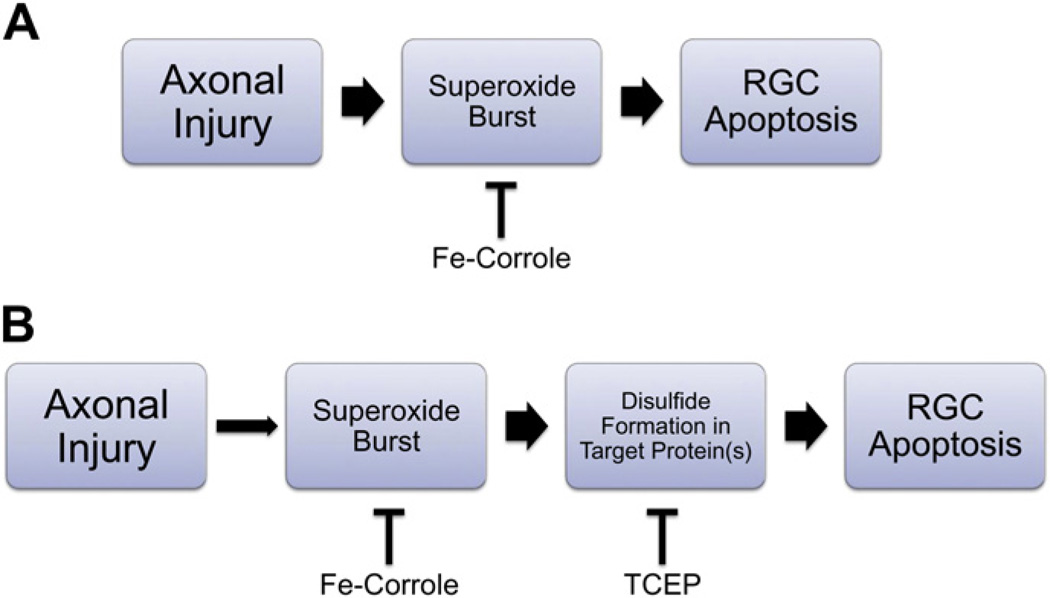Fig. 6.
Schematic for the signaling of retinal ganglion cell death after axonal injury. A. Axonal injury induces a burst of superoxide within the retinal ganglion cell (RGC) soma (Kanamori et al., 2010a; Lieven et al., 2006). However, the failure of Fe-corrole to inhibit most RGC death despite effective scavenging of superoxide (Kanamori et al., 2010b) implies that this pathway incompletely reflects the pathophysiology of axonal injury. B. Another possibility is that the time course for superoxide induction is slow and stochastic, but the induction of downstream oxidative events (e.g. disulfide formation) and subsequent apoptosis is rapid. If this were the case, even a small amount of superoxide may induce downstream signaling. Inhibiting downstream signaling events, e.g. with redox modulating agents such as TCEP (Almasieh et al., 2011; Swanson et al., 2005) may be necessary for effective neuroprotection.

